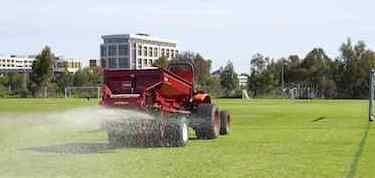From the Toro “Grounds for Success” newsletter of July 2018:
Have you ever wondered what new technologies Toro is working on for the future? Are you curious about where we get our inspiration for new products and features? You may be surprised to find out we have a whole team dedicated to supporting and facilitating research and development, and we’re always evolving right along with our customers and markets.
Today, that team is known as Toro’s Center for Technology, Research and Innovation (the TRI-Center). The name is new, but our commitment to development goes back to The Toro Company’s beginnings in 1914. That’s why this story about the future wouldn’t be complete without a look back at our past.
Finding better ways to solve customers’ challenges has always been part of the fabric of Toro’s culture. An important chapter in that legacy started in 1952, when turf industry legend James R. Watson, Ph.D., joined The Toro Company as director of agronomy.
Around that time, Dr. Watson began leading a team of researchers in conducting studies on a variety of grasses and soils to ensure best management practices in fertilization and water usage, as well as approaches for controlling unwanted grasses, disease and pests. (Fun fact: The area where these studies took place was once the only research center of its kind in the world. It’s now known as the “Dr. James R. Watson Research and Development Proving Grounds” and it is still being used today at Toro’s world headquarters in Bloomington, Minn.)
Where Will the TRI-Center Focus in the Future?
Looking ahead, the TRI-Center is focused on exploration in several key areas:
Productivity. Whether you’re facing a shortage of labor or time (or both), increased productivity is more important than ever. That’s true for professionals and consumers alike. The TRI-Center team continues to look at ways to save time and streamline efficiencies, for example, by simplifying operation and maintenance processes.
Precision management. The fewer resources and inputs you have to work with, the more important it is to manage them efficiently. Historically, many of our customers have relied more on art than science to manage their resources. In the future, our goal is to equip you with more science (i.e., data-based information) to assist you in making better-informed decisions.
Alternative energy. We are working in support of those who have a desire to reduce their carbon footprint. We continue to investigate the potential of various forms of alternative energy, aimed at improving air quality through reduced emissions, and achieving quieter, less disruptive operation.
Technology exploration. What’s on the horizon that could benefit our customers? Can we use existing technology in new ways to achieve customers’ goals? Members of the TRI-Center will be keeping their eyes, ears and minds open — always looking for creative ways to apply technology in useful ways.


